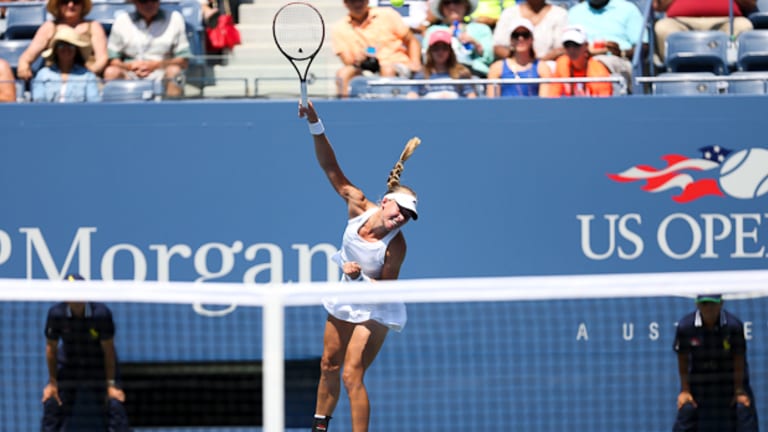“I’ve been trying to tell myself to go for it. You won’t win matches by holding back.”
NEW YORK—Johanna Larsson spoke those words immediately after she eliminated No. 21 seed Sloane Stephens in a second-round match today in Arthur Ashe Stadium. It would be wise for Stephens to read and study them if she wants to halt the slide that has seen her fall from No. 11 in the world to No. 24.
Larsson won this see-saw, two-hour and 13-minute clash which produced 14 breaks of serve, 5-7, 6-4, 6-2. At one point, Larsson trailed by a set and 0-3. But her perseverance, focus, enthusiasm, and energy—qualities that contrasted markedly with Stephens’ casual demeanor and frequent bouts of passivity—ultimately helped her win the day.
Stephens has built a reputation as a player who elevates her game at Grand Slam events. But she was a first-round loser at Wimbledon in June, and here she’s taken another bad loss. Worse yet, she’s missed an enormous opportunity: While Stephens was drifting in and out of her battle with Larsson, No. 3 seed Agnieszka Radwanska was eliminated by Peng Shuai. Thus, the most fearsome players left in Stephens’ quarter of the draw are No. 6 seed Angelique Kerber and No. 9 Jelena Jankovic—formidable, but hardly guarantees.
Stephens seemed unfazed by all these details and their implications after the match. She said, “I had many opportunities and just couldn’t convert.” Defending herself against the suggestion that she’s no longer making progress and getting better, she pushed back: “Everyone works at their own pace; I’m not going to dwell on this, I will keep improving and getting better and looking forward to the next tournament.”
This match-up had appeal for any fan of shotmaking skill, Stephens is unpredictable and creative; you just never know when she’s going to pull the trigger on a big forehand—both a good and bad thing. Larsson is free-swinging and impetuous. The 26-year-old Swede is ranked No. 96, but has been as high as No. 46, just a little more than two years ago. Her game is volcanic, and while she drills a few balls into the cheap seats in every match, it’s nice to see someone besides Sam Stosur really bring the kick serve.

